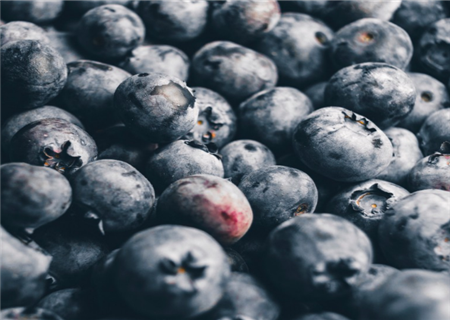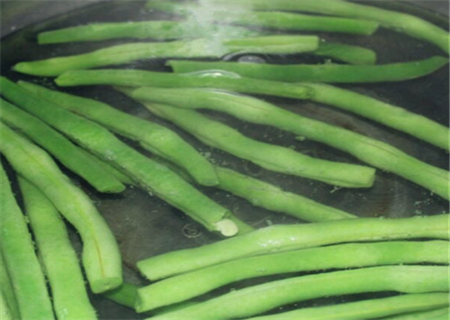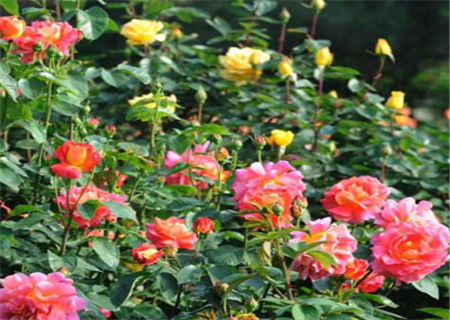"healthy fruit" how many blueberries should I eat in a day? With planting conditions and planting methods!
Blueberry, one of the five healthy fruits in the world, belongs to Azaleaceae and blueberry. The fruit is rich in nutrients, which can prevent brain nerve aging, protect vision, strengthen heart, fight cancer, soften blood vessels, enhance human immunity and other functions. How many blueberries should I eat a day? What are the planting conditions and methods for growing blueberries?
1. How many blueberries should I eat in a day?
Blueberry is a cool fruit with very low calories. Many girls will buy a box of blueberries to eat at home when they lose weight. But you can't eat more blueberries. Eat 6-10 blueberries a day, and eat no more than 20 blueberries a day, which is usually a small box. And when you take more than 10 tablets, you must stop and eat them for an hour or two, otherwise it will hurt your intestines and stomach.

2. Planting conditions of blueberries
1. Climate: according to the climatic characteristics and the growth habits of different blueberry cultivars in China, the planting areas can be roughly divided into four producing areas: Changbai Mountain and Daxiaoxing'an Mountains, Liaodong Peninsula and Jiaodong Peninsula, Yangtze River Basin and South China.
2. Soil: blueberry is suitable for loosening sandy soil with good drainage performance, the soil pH value is 4.0-5.5, the optimum soil pH value is 4.3-4.8, the soil organic matter content is 812%, the best soil water level is 40-60 cm, and the soil is moist without stagnant water.
3. Moisture: blueberry roots are distributed shallowly and are sensitive to water deficiency. In most cases, timely irrigation is needed according to soil moisture. River water, reservoir water or groundwater can all be used as irrigation sources. However, irrigation with high salt content and high pH value should be avoided.
4. Topography: blueberries should choose flat or gentle slopes. Although the mountains with large slopes are beneficial to improve fruit quality, they bring a lot of inconvenience to field operation. Cultivation of blueberries in valleys or low-lying plots should be avoided to avoid frost damage during flowering.
Third, the planting method of blueberry
1. Deep ploughing and soil preparation: after the blueberry orchard is selected, the blueberry orchard should be deeply ploughed with green fertilizer one year before planting, and the depth should be 20cm to 25cm. The soil types that do not meet the requirements of blueberry should be improved before planting to facilitate the growth of organic blueberry.
2. Planting time: in the south which is not very dry in winter, it is best to plant from autumn to early spring, and it is suitable to plant in the rainy season in the dry place in autumn and winter, and it can be planted all the year round in places with irrigation conditions. It can also be planted in summer in Majiang, Guizhou.
3. Planting density: the planting depth of one-year-old seedlings is 15cm to 20cm, and the soil should be pressed tightly to achieve "three supports, two steps and one seedling". Rabbit-eyed blueberries often use 2 × 2 meters or 1.5 × 3 meters, tall clump blueberries 1.2 × 2 meters, dwarf blueberries (0.5 × 1) × 1 meter.
3. Pollination trees: rabbit eye blueberries must be equipped with pollination trees, high-clump blueberries and dwarf blueberries have higher self-pollination rate, but the allocation of pollination trees can also improve fruit quality and yield. the proportion of main varieties and pollinated varieties was 1:1 or 1:2.
4. Soil management: blueberry root distribution is shallow, and slender, no root hair, so the soil is required to be loose and well ventilated.
① clean ploughing method: clear ploughing can be carried out from early spring to August. Clear ploughing after autumn is disadvantageous to overwintering. Alpine blueberries are often cultivated on sandy loam. The suitable depth of clear ploughing is 5cm to 10cm, too deep is easy to harm the root system.
② grass growing method: that is, grass growing between rows. Compared with clean tillage, grass growing method is also beneficial to increase yield, and has the advantages of maintaining soil moisture and convenient mechanical operation.
③ mulching method: soil mulching method is widely used in blueberry production. It can increase soil organic matter, improve soil structure, regulate and maintain soil moisture, reduce soil pH value, control weeds and so on.
5. Fertilization methods: blueberries are recommended to use organic fertilizer when fertilizing. Farmland in China has caused serious pollution due to excessive use of chemical fertilizer, resulting in reduced or even no yield.
The type of ① fertilization: the effect of nitrogen, phosphorus and potassium compound fertilizer is better than that of single fertilizer, the suitable ratio of nitrogen, phosphorus and potassium fertilizer is 1 ∶ 1 ∶ 1, ammonium nitrogen fertilizer such as ammonium sulfate is better, nitrate nitrogen fertilizer is not suitable, and chlorine fertilizer such as ammonium chloride and potassium chloride is not suitable.
② fertilization method: tall clump and rabbit eye blueberry can be applied by ditch method, and the suitable depth is 10-15 cm. Fertilization is carried out before sprouting in early spring, or it can be applied again in the berry ripening period.
The amount of ③ fertilization: excessive fertilization can easily damage the blueberry tree and even kill the whole plant, so the amount of fertilizer application must be determined according to soil fertility and tree nutritional status.
6. Irrigation method: blueberry root distribution is shallow, like wet, timely irrigation is very necessary, but we should pay attention to water source and water quality. Deep well water generally has high pH value and high content of sodium and calcium. PH can be adjusted to 4.5-5.5 with sulfuric acid.
7. disease control: the diseases of blueberry are caused by fungal diseases, bacterial diseases and nematodes, but our country is a new introduction and cultivation area, so the occurrence of diseases and insect pests is less, so we can do a good job of prevention.
8. Timely harvest: the ripening period of blueberry fruits is different between Rabbit Eye and Nangao Cong. Generally, the harvest lasts for 20-30 days, usually once a week. The fruits should be picked manually when they are fresh, and can be harvested by machinery for processing.
Time: 2019-04-07 Click:
- Prev

What are the functions and effects of kidney beans in herbs? With balcony planting method!
Kidney bean is another name for kidney bean, and there are many names. It is often called Meidou in the north and also called Meidou in Lanxi, Zhejiang Province. Also known as kidney beans, kidney lentils, April beans, etc., Qingming beans in Quzhou, Zhejiang, and string beans in Sichuan and some central China. What are the effects and effects of kidney beans?
- Next

What are the reasons why the "Queen of Flowers" rose does not bloom? How to deal with it? When is cutting best? attached cuttings
Rose, known as the queen of flowers, also known as the moon red. Generally red, pink, occasionally white and yellow, can be used as ornamental plants, but also as medicinal plants. Many farmers love to plant roses. What are the reasons why roses do not bloom? How to deal with it? When is the best time for roses?
Related
- Fuxing push coffee new agricultural production and marketing class: lack of small-scale processing plants
- Jujube rice field leisure farm deep ploughing Yilan for five years to create a space for organic food and play
- Nongyu Farm-A trial of organic papaya for brave women with advanced technology
- Four points for attention in the prevention and control of diseases and insect pests of edible fungi
- How to add nutrient solution to Edible Fungi
- Is there any good way to control edible fungus mites?
- Open Inoculation Technology of Edible Fungi
- Is there any clever way to use fertilizer for edible fungus in winter?
- What agents are used to kill the pathogens of edible fungi in the mushroom shed?
- Rapid drying of Edible Fungi

